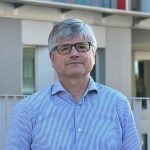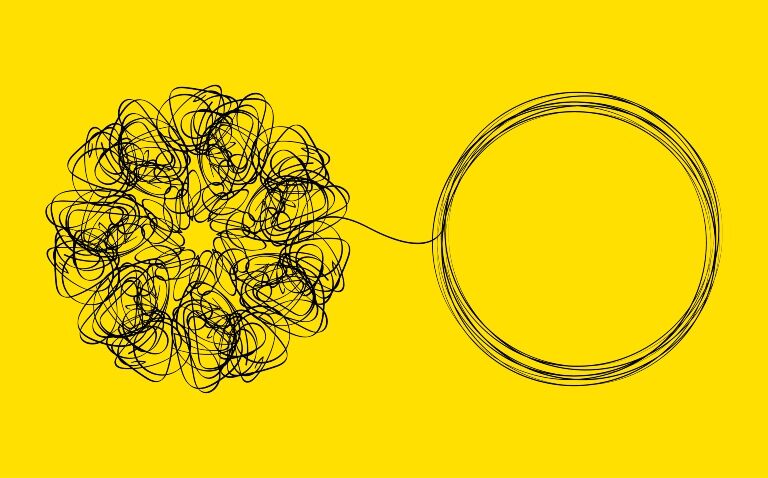
Advanced genome sequencing techniques have led to significant progress in understanding and managing the many facets of cancer, and recent research in Barcelona has explored the unknown origins of second cancers in children. Here, paediatric oncologist Dr Jaume Mora discusses the different routes of second cancer development uncovered by the team and how this new-found knowledge has provided answers for families, as well as supporting future cancer treatment for children affected by two independent cancers.
Childhood cancer is rare, and the likelihood of a child developing two independent cancers during childhood is extremely low. But for the children who do experience this double diagnosis, as well as for their families and healthcare team, the news is devastating and undoubtedly raises many questions.
Understanding why second cancers occur in children is the driver behind paediatric oncologist Dr Jaume Mora’s most recent work. The findings of his latest study, published in the journal Cancer Discovery, unveil the origins of these second malignancies and can have a direct clinical impact on the treatment pathways for young people diagnosed with cancer.
Dr Mora is the scientific director of the Pediatric Cancer Center Barcelona at SJD Barcelona Children’s Hospital and the director of its developmental tumours laboratory. Working alongside the Institute for Research in Biomedicine, this recently co-authored work is the first to use advanced genome techniques to identify a distinct pattern of events that can lead to the development of a second cancer in children – something that has remained an unresolved research issue for a long time.
‘Every time we encounter such a case, the questions are very desperate. How to explain to a mother of a child who already survived one cancer, after all the fights and all the difficulties, years later, [that you’re diagnosing] them with not a relapse or recurrence of the previous cancer but a whole different new entity? That is devastating, and none of us have had an explanation for such an occurrence,’ Dr Mora says.
As a paediatric oncologist – a rare speciality in Europe – Dr Mora found himself in a unique position to seek answers to these questions. After finishing his general paediatric training in Barcelona, he worked in the US for six years, undertaking a haematology and oncology fellowship at the Memorial Sloan Kettering Cancer Center in New York and finishing his formal paediatric oncology training before moving back to Barcelona.
‘At 30 years of age, I entered a lab for the first time. I understood that there was no other way I could practise paediatric oncology unless I had a deep understanding of the biology of the tumours,’ he recalls. ‘It’s what everybody calls translational research, but very few people really do [it]. This is basically research that stems from clinical questions related to diagnosis, prognosis and therapy for my patients.’
Five years ago, one of the biggest clinical question he faced was: why and how do some children develop second cancers?
Exploring the origin of second cancers
After reviewing over 4,000 cases of childhood cancers from their hospital in the last 10 years, the research team identified 25 well-annotated cases. Each case had a diagnosis with two separate entities and enough tissue material for the team to determine the origin of each tumour. Using whole-genome and error-correcting ultra-deep duplex sequencing of tumour and normal samples, the team explored the origin of the second malignancy in these cases.
‘Thanks to the technology that is available and modern sequencing techniques, you can track every single clone all the way back to the cell of origin,’ Dr Mora explains.
Analysis of the results showed that all the children’s cancers had a prenatal origin. The research team discovered three distinct pathways of second developmental cancers, the understanding of which began with one of Dr Mora’s patients, a young girl known as Marta, who survived an early childhood neuroblastoma diagnosed at 17 months old.
Marta was treated with chemotherapy followed by surgery, radiotherapy and further cycles of high-dose chemotherapy plus immunotherapy. She went into complete remission, only for cancer to return nine years later – this time as a malignant rhabdoid tumour of the soft tissues. Until then, this pair of tumours had never been described in the same individual.
Dr Mora recalls: ‘This study stemmed from the devastating experience of having Marta die after the second cancer when everybody was so happy because we thought we had cured her. And, indeed, we had. I promised the parents that we would study and eventually understand why Marta developed two such devastating cancers.’
Marta’s parents gave the team permission to study all of their daughter’s tissues and provided blood samples from themselves and the wider family. Dr Mora describes the multidisciplinary approach of his work – which often begins with the family asking questions and supporting the clinicians – as the ‘DNA of our research’.
The multidisciplinary model involved oncologists, pathologists and other specialities and spanned tissue collection, biobank access, bioinformatics and more. Without this, it ‘would have been impossible’, says Dr Mora.
‘Genetic hits’ and cytotoxicity in second cancers
The researchers sequenced the whole genome of the primary neuroblastoma tumour and the secondary malignant rhabdoid tumour, as well as blood and bone marrow samples taken at the time of diagnosis of the second tumour.
At autopsy, they also collected samples of normal tissues of other organs, including kidney, liver, pancreas, heart, lung, spinal cord, spleen and brain. The whole genome of blood samples taken from both parents was analysed to filter out inherited variants.
Both Marta’s tumours were discovered to have developed from two distinct ‘genetic hits’ which occurred before organ formation and went on to evolve at different times. ‘Having those tumours sequenced completely, we show that, in her case, she was born with two completely independent mutations arising from the first eight weeks of gestation,’ Dr Mora explains.
This pathway of second tumour independent development was also seen in the second of the four children documented in the research paper.
For the third child, a common somatic mutation acquired early during embryonic development was the driver of both solid malignancies that he developed.
When it came to the fourth child, the researchers found that the exposure to cytotoxic therapies used to treat a first tumour was linked to the emergence of a second cancer four years after initial chemotherapy treatment.
Despite this cytotoxic origin being a rare occurrence, both chemotherapy and radiation are toxic poisons and can potentially lead to a second cancer. The genetic analysis in this study revealed this is only likely to occur if the child has a pre-leukemic clone, and thus development of the second cancer is not a random process.
Currently, there is no way to practically determine which children have a pre-leukemic clone and who will respond in this way to treatment. The finding, however, has provided extra information that Dr Mora can share with his patients and their families when assessing risks, and it is already driving future research.
Safer treatments and peace of mind
Another intriguing finding from the study came after treating Marta’s neuroblastoma and the subsequent analysis of the tissues in her body. The researchers found they could track the mutational signature induced by the chemotherapy.
Platinum was found in all her normal tissues except for the malignant rhabdoid tumour, which seems to have been protected – something that has never been shown before. The mutational signature of medications in normal tissues provides evidence of the impact of cancer treatment on children’s health, which could help develop safer treatments in the long term.
Dr Mora adds: ‘Now we have a way of providing a biomarker of the impact of the drug we’re using for the future.’
In Marta’s case, the researchers were able to show that chemotherapy was not the cause of the second cancer. The research has provided Dr Mora with ‘scientific truths’, which he says have provided peace of mind for the parents.
‘When we found out the answer, we sat down with Marta’s parents, and they were the very first to learn our results. This is the most important thing we can provide to the parents,’ Dr Mora says. ‘Up until now, we had no answer whatsoever and that was terrible to experience from their side, as well as from the profession.’
He concludes: ‘We accomplished the best that we promised, which was understanding, and that is so critical for the parents. It is our responsibility not only to cure our kids but to understand what is going on, why these children develop [a second cancer] and what we can do better for the future.’










